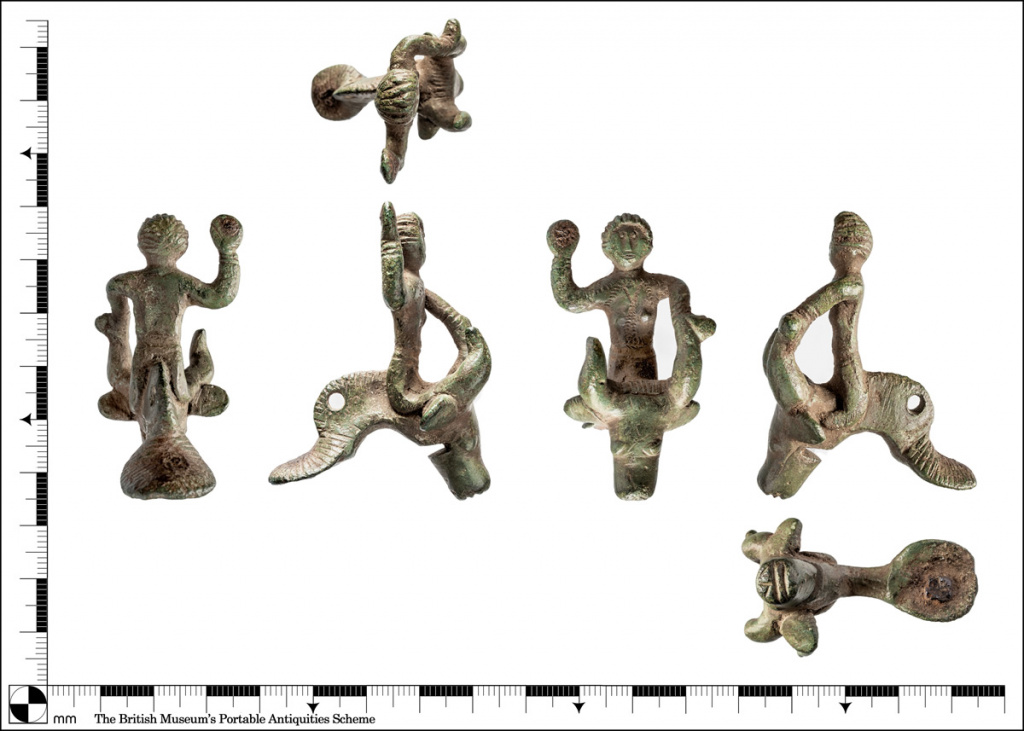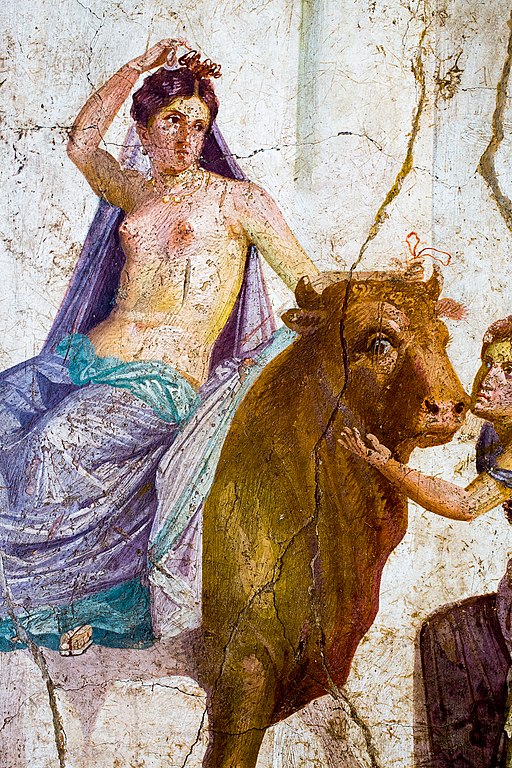“Barnetby Bull Rider” sold at auction
The “Barnetby Bull Rider” vessel mount was sold at auction on Wednesday (9 November 2022) for £7,800 by Essex Coin Auctions. The mount is thought to be Late Iron Age or Roman and depicts a female figure riding a bull.
Finding the Bull Rider
Paul Campbell, a detectorist since he was nine years old, was detecting near Barnetby le Wold in North Lincolnshire in 2016. He said the field was being turned into grassland for sheep in a few days and so it was a race against time to search it. He’d had a good day’s detecting and had found a few Roman coins. Calling it a day, he was heading back to his bike when he got a signal on his detector. Expecting more Roman coins he dug down and saw some “old damaged horns“.

The find was recorded at the PAS as LIN-B96982 where it was designated a Find of Note of Regional Importance. Many bucket handle-mounts in the form of a bull’s head are known from Roman and Iron Age sites but this find is the first known example from this period of a whole, full bodied female figure riding a bull.
Speaking about the find before the auction, Paul said he was “not money orientated. It’s more important that I’ve saved it from the plough. I’m interested to know what it will be bought for, but it’s more about Lincolnshire history and it being seen“
After the auction, Adam Staples, from Essex Coin Auctions, said the find was bought on by an institute which wished to remain anonymous. He said the item had gone to a “good home which planned to put the figure on public display in the future“.
Who is the Bull Rider?
Adam Staples said “It is such a unique piece and begs the question just who was she? Was she a slave, a priestess, a Queen? The names of powerful Celtic Queens such as Boudicca and Cartimandua have survived the ages, but the identity of our rider has been lost to history“. The finder, Paul, thought the piece might be “from Corieltauvi times“.
Europa
The PAS record suggests that the figure might be Europa.

As shown on this fresco, Europa is often shown riding on a bull. The story is that Zeus transformed himself into a bull as part of an attempt to seduce Europa. She began caressing the bull and climbed onto his back. Zeus ran to the sea with her and swam to Crete.
In the Pompeii fresco and other images, such as the Keynsham mosaic, Europa is depicted with her left hand holding the bull’s horn with her right hand holding a cloth or garment.
The right hand of the mount has a small area of iron corrosion and the speculation is that it once held a piece of fabric secured by an iron rivet.

